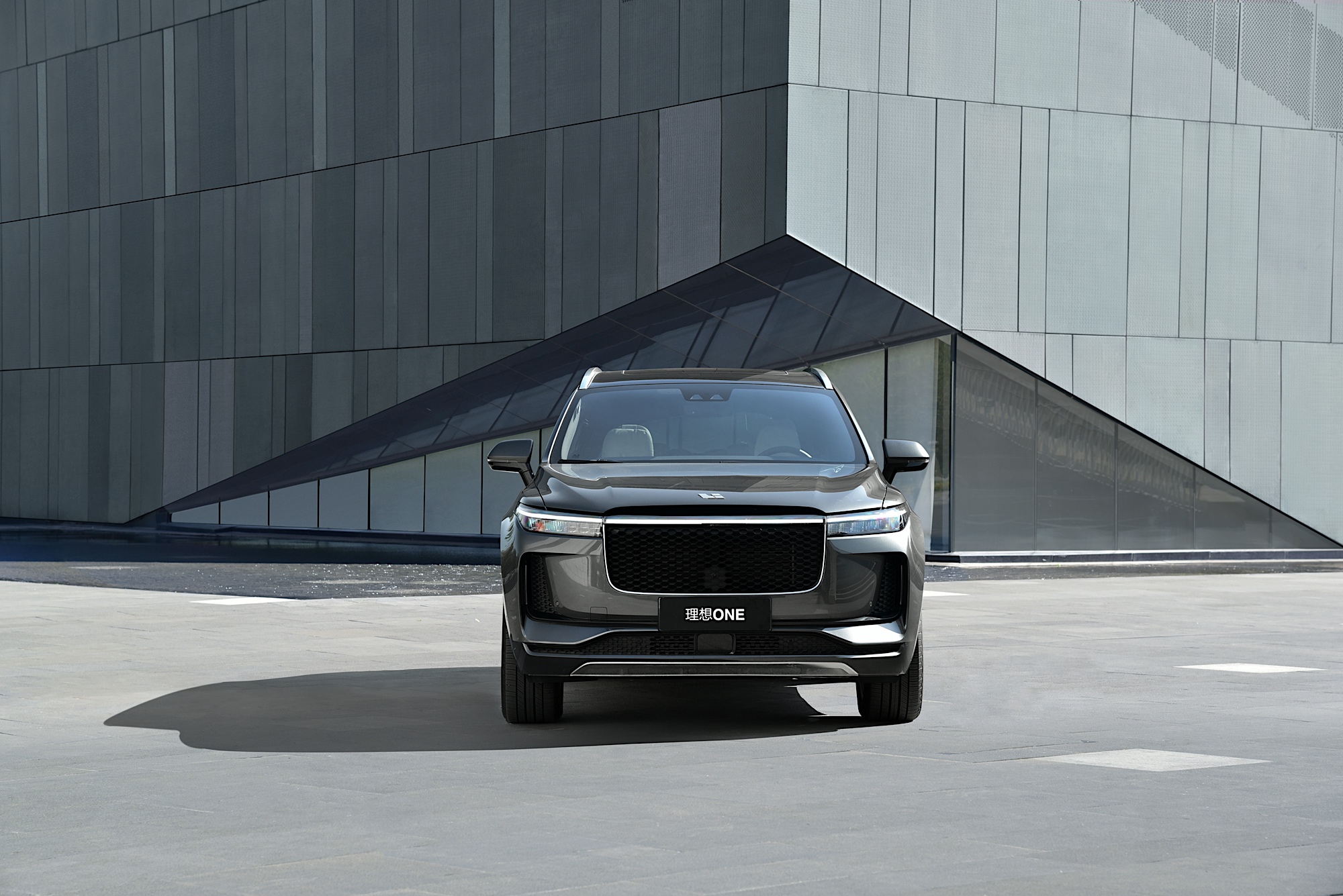Translation
On October 15, after the announcement from the Ideal Car company that they will directly deliver the 2020 model to customers, I launched a small survey on the 42 Garage mini-program named “Are you satisfied with the optimization of the Ideal ONE 2020 model?” As of December 4, a total of 851 users participated in the survey, of which 455 were certified pre-order and reservation users.
According to the survey results, as many as 85.71% of pre-order and reservation customers were satisfied with the upgrade content.
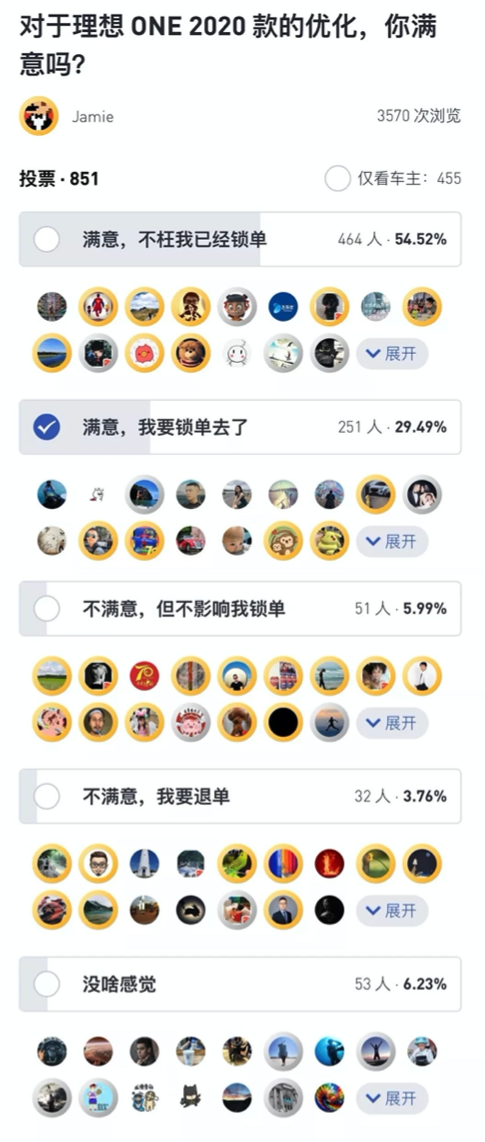
So, how much improvement did the various upgrades of the 2020 Ideal ONE bring to the vehicle’s workmanship, handling, NVH, and intelligent driving compared to the 2019 model?
On November 30, with this question in mind, I went to Changzhou to experience the 2020 model’s new vehicles before the Ideal ONE delivery. I hope that through this experience report, I can from the perspective of a potential car owner, answer some of your questions.
As usual, at the beginning of the article, I declare that it will contain a lot of my personal subjective opinions. If you have different opinions, follow your own feelings.
This article mainly has two parts. First is the introduction of the 2020 model upgrade content. If you are a significant follower of Ideal ONE, you must have already known about this content. You can directly skip to the second part to read and learn about those strange little issues that only users will be concerned about. Perhaps, it includes what you care about.
What are the improvements of the 2020 Model?
For the optimization of the 2020 Ideal ONE, it can be divided into two aspects: “visible and touchable optimization” and “observable optimization.”
- Visible and Touchable Optimization
Variable intake grille
The variable intake grille is the least surprising configuration in the upgraded 2020 model.
As early as April, during the Changzhou Base Open Day event, Li Xiang preemptively leaked this good news to visiting users. However, at that time, he stated that due to various complex tests, the first batch of users might not have time to install it and needs to be installed for free later. Unexpectedly, it was still delivered in the first batch.
The variable intake grille is provided by Röchling. In the words of Zhang Xiao, the product manager of Ideal ONE, “It’s expensive, very expensive, and really expensive” is the biggest feature of this accessory.After adding the adjustable intake grille, the most obvious change is the improvement of the overall appearance of the front face. When standing in front of the car and looking at the grille, the previous thin appearance is no longer present as the silver intercooler inside cannot be seen. The front face now has a more imposing presence.
Of course, the visual changes are not the most important. The biggest change brought about by the adjustable intake grille is the improvement in performance. With the adjustable intake grille closed, the overall vehicle drag coefficient can be reduced from 0.34 Cd to 0.32 Cd, which would save 5% of energy consumption under high speed conditions.
The opening and closing of the adjustable intake grille is controlled by the system, and there is no need for manual intervention. You won’t even know if the grille blades have opened while driving. In addition, the adjustable intake grille can be upgraded in the future to control the angle of the grille opening and closing with speed. This will balance the wind resistance and cooling requirements while reducing energy consumption.
The second-row double-layer sound-insulating and privacy glass is still provided by Saint-Gobain, which reduces noise by 7-8 decibels compared to single-layer glass, leading to a significant improvement in sound insulation. In addition, the middle PVB interlayer of the double-layer glass provides an additional anti-theft attribute. Even if the glass is broken, it can still maintain its integrity, making it safer.
Compared to the front row double-layer glass, the thickness of the second-row double-layer glass is 4 mm, which is 1 mm thinner than the front row glass. This is not an ideal shortcut due to cost, but like the thinner and more expensive mobile phones, 4 mm double-layer glass is actually more expensive than 5 mm glass. The reason for using thinner glass is mainly due to the structure of the door panel.
Due to the product model, the color of the second-row double-layer sound-insulating privacy glass is slightly lighter than that of the third-row privacy glass. The light transmittance of the second-row double-layer sound-insulating privacy glass is 15%, which is currently the lowest light transmittance of 4 mm double-layer sound-insulating privacy glass from Saint-Gobain. The light transmittance of the privacy glass of the third-row side window is 10%, which is 5% lower than that of the second-row glass. The difference in light transmittance of 5% is hardly noticeable to the naked eye.
The addition of chrome-plated trim around the grille is because users have feedbacked that the front of the car is relatively dull, and lacks the premium feeling compared to the back of the car. After trying out different solutions, the Ideal Design team finally decided to add chrome-plated trim around the grille. According to the on-site observation, the addition of chrome plated trim does indeed improve the sophistication of the front face, like an engineering student suddenly transforms into a business elite. It can be said that it is the finishing touch.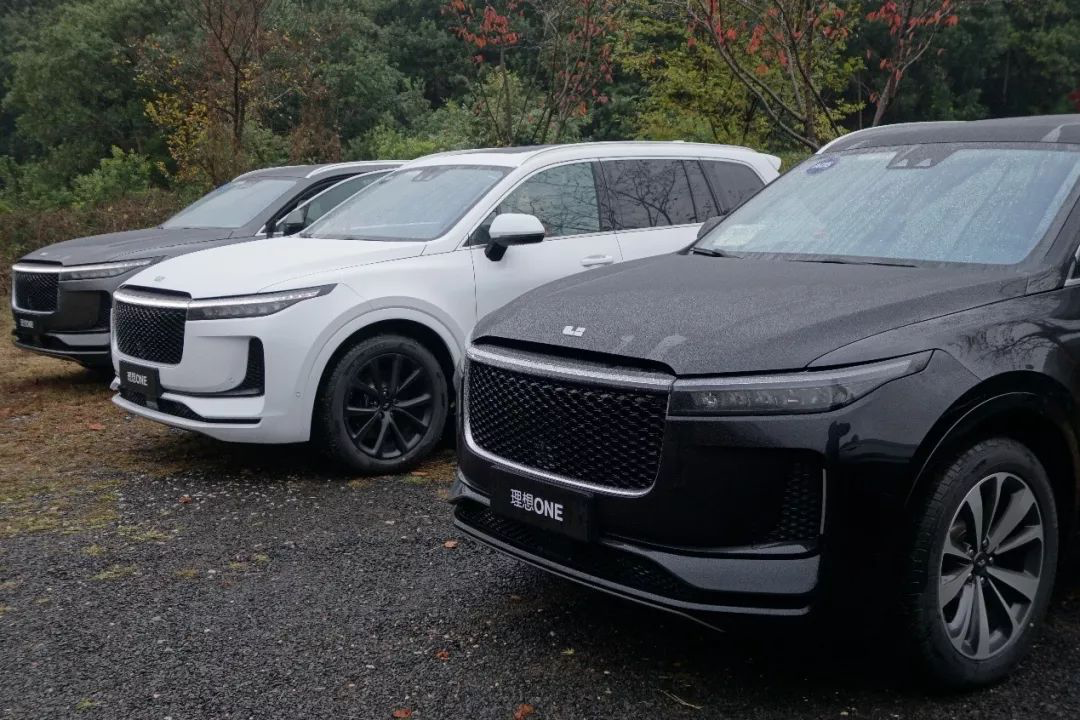
As for the chrome trim, someone in the Ideal Car Enthusiast group also gave feedback that looking at the photos, the front face seemed to have an extra silver curve, which appeared a bit abrupt. However, in fact, the chrome trim on the actual car is not as prominent as shown in the photos, and the overall look is still very harmonious.
Improved crafting of B-pillar garnish and steering wheel airbag cover
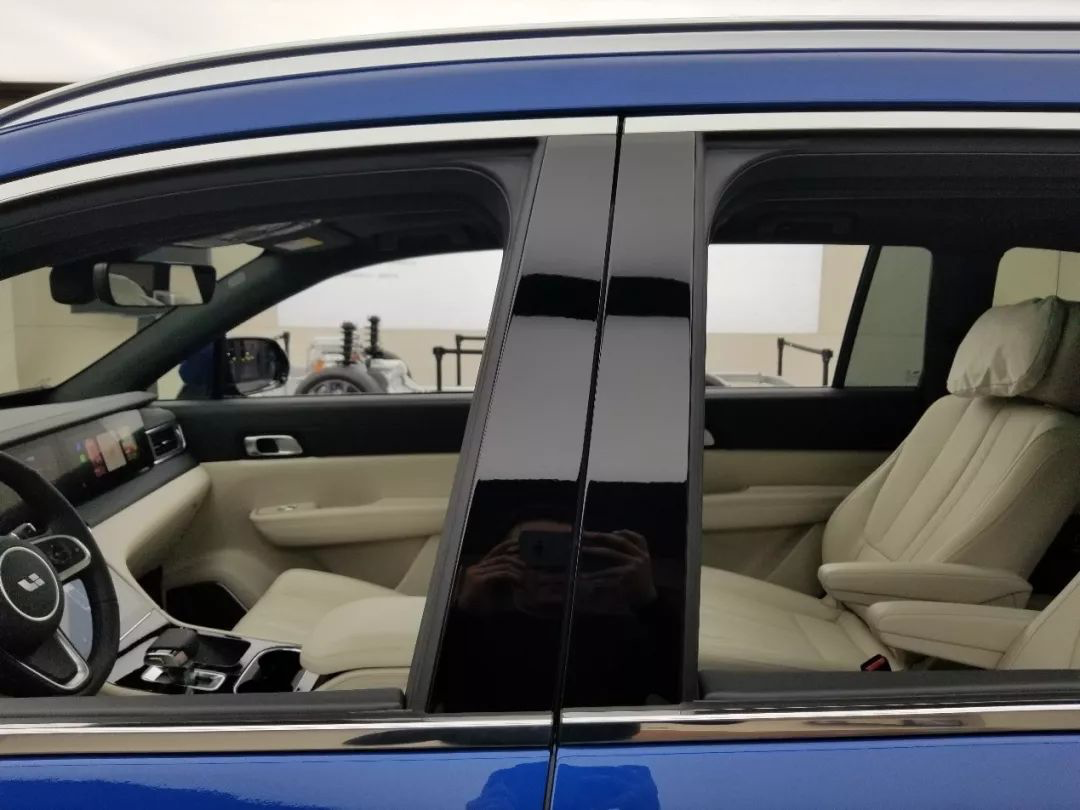
Compared with the car in the PP3 stage, the B-pillar garnish is now blacker and shinier, and the refinement has been improved. At the same time, the scratch resistance has also been enhanced, and the surface flatness has been improved.
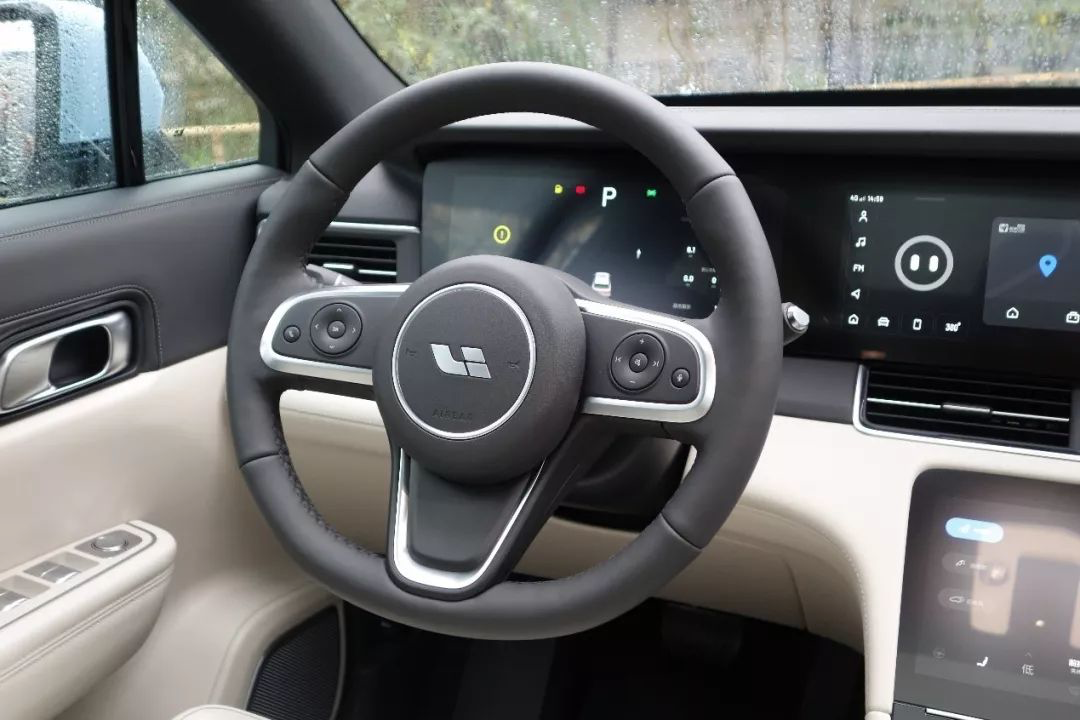
The steering wheel airbag cover has optimized the leather grain pattern, making it more delicate in terms of sensory experience, compared with the car in the PP3 stage.
Cancellation of the second row exterior handrail
The cancellation of the second-row exterior handrail is the most controversial point in the 2020 model’s configuration optimization. At first, when I learned that the exterior handrail would be cancelled, I also felt very disappointed. However, after I sat in the car with a single handrail, I found that the impact of the cancellation of the exterior handrail on functionality was not as significant as I had imagined, except for the possible visual discomfort caused by the absence of an external handrail. When the arms are placed respectively on the inner handrail and the door handle, there is a slight difference in the height of the handrails on both sides, and the handrail on the door side is a bit farther away from the person, but it is still within an acceptable range and does not cause any discomfort.
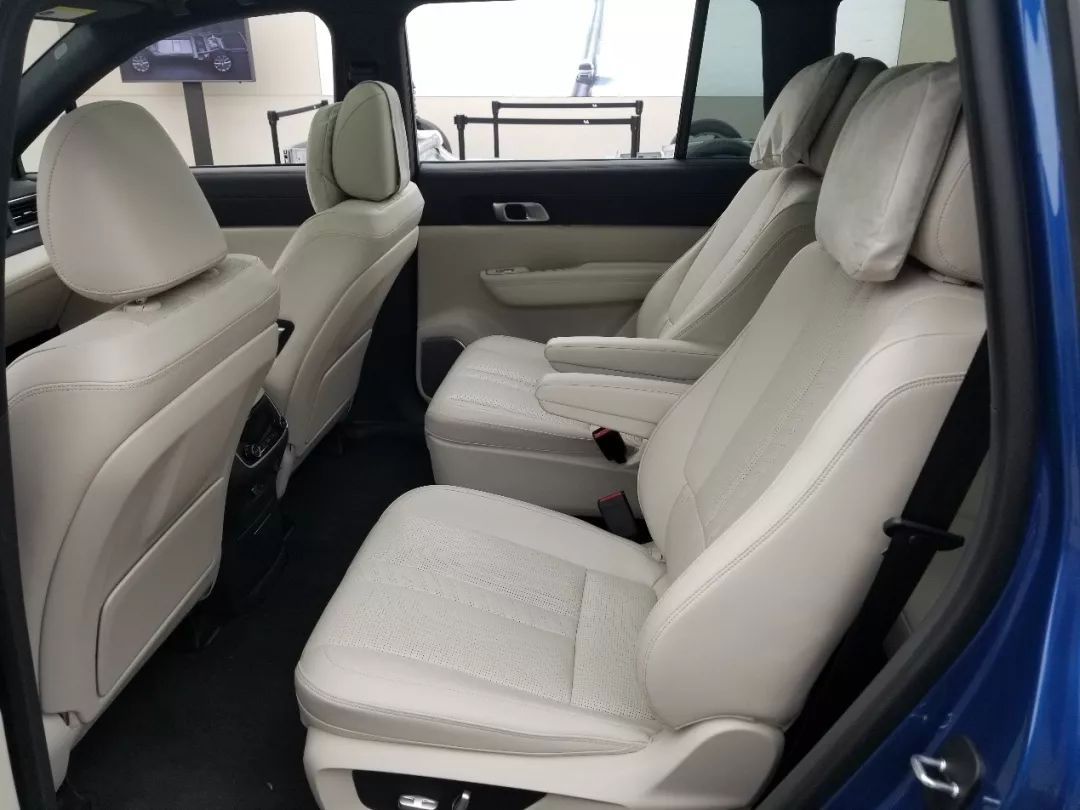
After the exterior handrail is cancelled, adjusting the seat and retracting the seat belt will no longer be interfered by the outer handrail. When getting off the car, there is no need to worry about forgetting to lift the exterior handrail and being blocked, eliminating the hidden danger of possible injuries. From a safety perspective, I tend to support the cancellation of the exterior handrail. However, after having lost the exterior handrail, it feels like losing a treasure suddenly. Therefore, from an emotional perspective, one needs to do some psychological construction.
Silent tires
Due to the 20-inch tires used by the Ideal ONE, its size is relatively large, and the cavity noise generated during driving is relatively larger. It is difficult to block cavity noise through “blocking.” Therefore, in the 2020 model, the Ideal ONE simply replaced it with silent tires, eliminating the noise from the source.## Translation
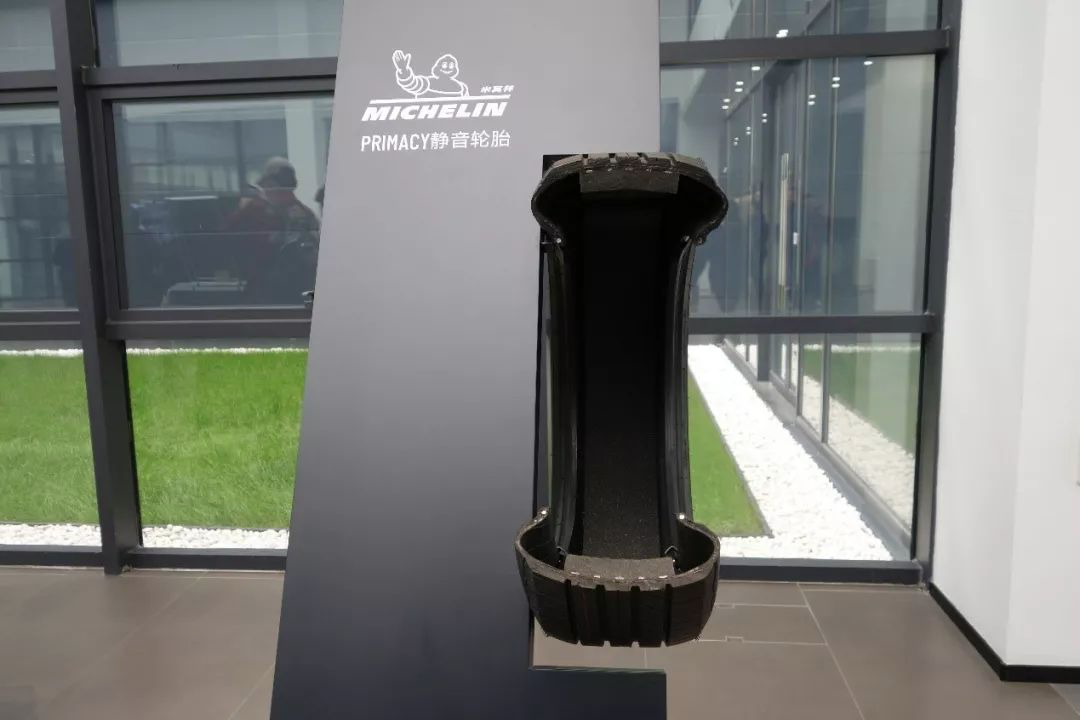
The inner wall of Michelin’s Primacy Silent tires is added with a polyurethane sponge layer, which can effectively absorb tire cavity noise at both low and high speeds.
Just like the variable intake grille and the second-row double-layer glass mentioned earlier, “expensive” is also an important feature of this tire.
The feel of the polyurethane sponge layer inside the tire is not much different from that of a regular sponge, soft and fluffy. If you encounter a puncture, you need to cut off the sponge at the puncture, and then stick the sponge back after repairing.
In addition, because the sponge has liquid absorption properties, the puncture repair liquid equipped with the 2019 model has been canceled. Now, the tool kit in the trunk lid under the rear shelf comes with an inflatable pump and a reflective vest.
Jademo, who was in the car with me, is particularly sensitive to the low-frequency cavity noise of the tires. According to his feedback, compared with the 2019 model, the 2020 ONE with silent tires has made significant improvements in tire noise.
Inductive tailgate
The inductive tailgate is a new configuration added in response to user feedback. With the key in hand, you can open the tailgate by kicking the area on the left side of the tailgate with your foot. The recognition area for the kick is approximately between the two radar sensors on the left rear of the car.
In order to prevent accidental opening caused by small animals passing under the car, the inductive distance for the kick is controlled within 10 cm from the bottom of the car.
It should be noted that the induction time for opening the tailgate with a kick needs to be between 0.2 and 1 second. Therefore, if you open the door with a sweeping kick, it may not open if you stay too long.
Some car owners also asked if the sensors would be affected by mud on the bottom of the car when driving on bumpy roads. The answer is that there is no need to worry because extensive testing has been done and there will be no impact.
At present, the inductive tailgate only supports physical keys, but there will be opportunities for OTA upgrades to support Bluetooth keys in the future.
12V power interface
The 12V power interface is also a configuration that car owners have been asking for. Two new 12V power interfaces have been added in the second row, with a total power of 180 W. Together with the 120 W power interface in the trunk, the total power of these three power interfaces reaches 300 W. However, for safety reasons, the official does not recommend users to use high-power electrical devices in the car.
Optimized closing energyBy adding a pressure relief valve to the trunk, the closing energy of the 2020 models has decreased from 14 joules to 12 joules.
Additionally, due to feedback from car owners about the previous loud closing sound, the closing sound has been optimized to be heavier.
- Improvements in driving experience
The 2020 Ideal ONE has mainly focused on suspension, brakes, instrument interface, and assisted driving in terms of optimization.
Suspension optimization
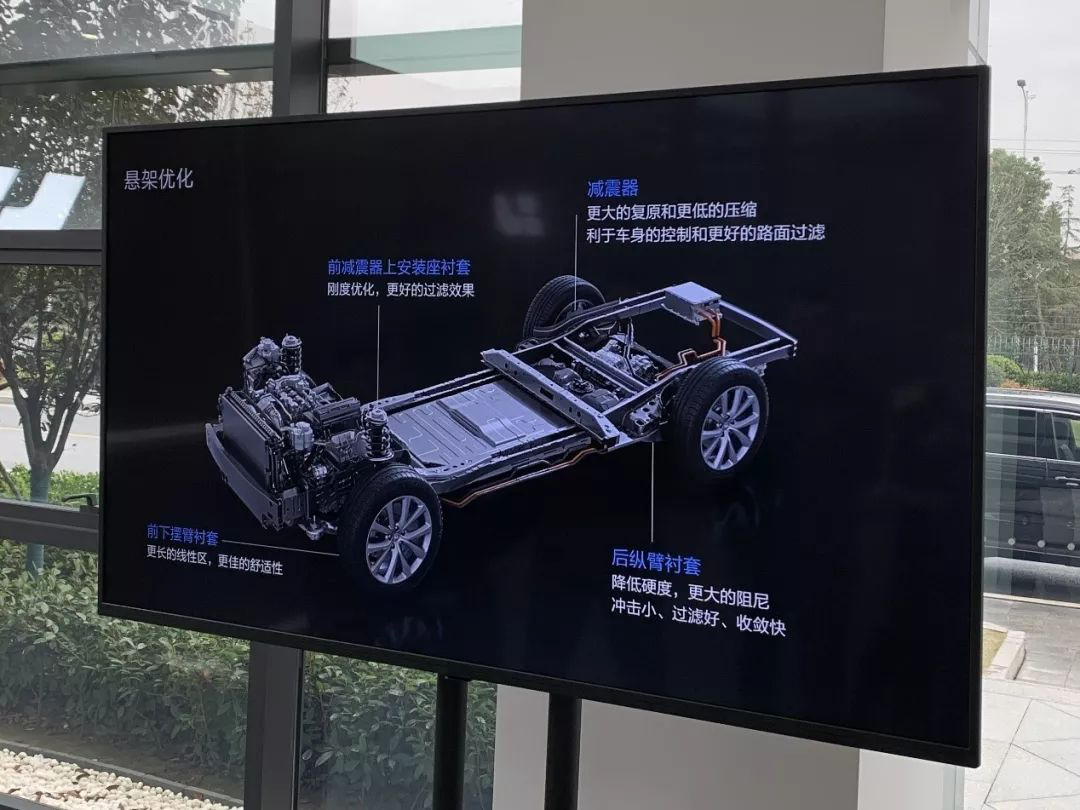
The suspension has been optimized primarily in the shock absorbers and sleeves.
In terms of shock absorber optimization, it is related to the vertical force. The structure of the shock absorber piston valve has been optimized, the force during compression has been reduced, and the force during restoration has been increased. The shock absorber stroke has been increased to improve comfort.
The optimization of the sleeves is the same principle. By adjusting the hardness and damping, the force is more gentle, thereby improving the toughness of the suspension.
Through comparison, we experienced the driving and riding experience of PP3 and 2020 Ideal ONE through continuous speed bumps, twisting roads, rope roads, washboard roads, cobblestone roads, Belgian roads, and elevated roads.
The 2020 Ideal ONE has made significant progress in suppressing excessive vibration, shock absorption, smoothness, and control of internal noise and abnormal noise on various road conditions.
Brake pedal feeling
During the previous test drive, some car owners reported that the brakes were not linear enough and the front end was soft. On the 2020 Ideal ONE, the brake pedal feeling has become more linear. Perhaps due to different training when driving usual cars, I think it would be better if the front brakes could be more responsive.
Instrument panel and infotainment optimization
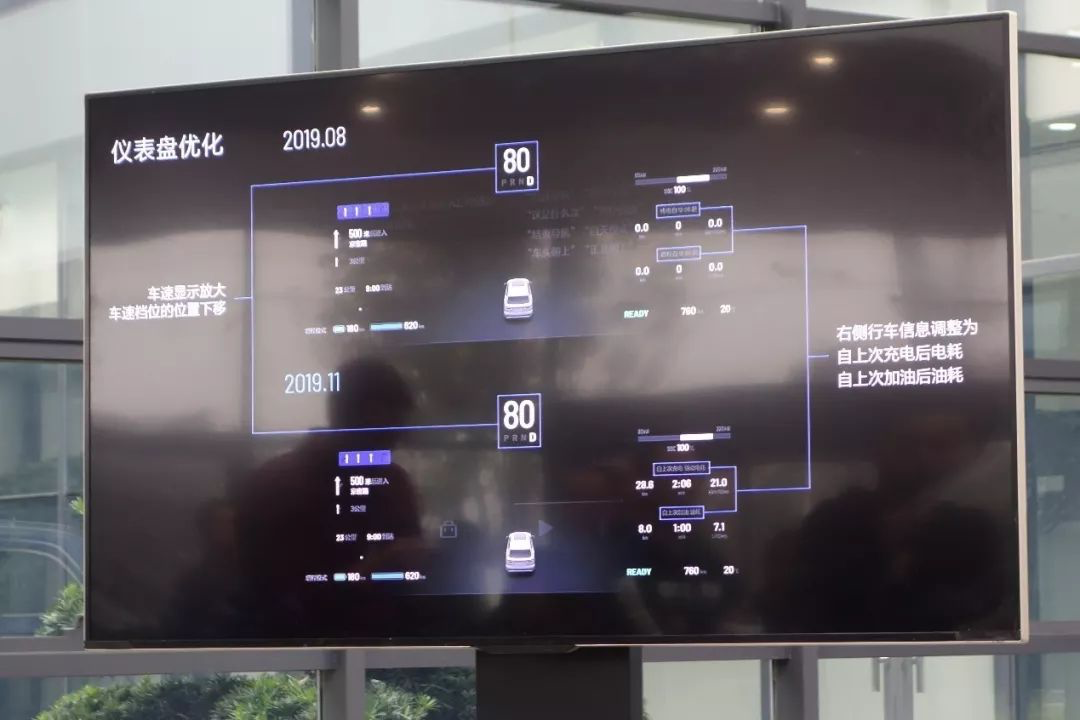
The optimization of the instrument panel, as shown in the figure, mainly involves the display optimization of speed and gear, as well as adjustments of driving information display.
Voice and audio system optimization
The optimization of the voice mainly involves three aspects. Firstly, when the voice assistant is awakened by anyone in any position, the voice of others will be shielded, which greatly improves the voice recognition rate when chatting in the car.
Secondly, high-frequency voice commands for navigating, music, etc. can be controlled without waking up the system, no longer needing to shout “Ideal Classmate”.Translate the Chinese Markdown text below to English Markdown text in a professional way while retaining HTML tags inside Markdown. Only output corrections and improvements without any explanations.
Finally, the speed of voice activation has also been optimized. Voice vehicle control supports the window being opened halfway and the nap mode. Also, muting won’t affect voice commands.
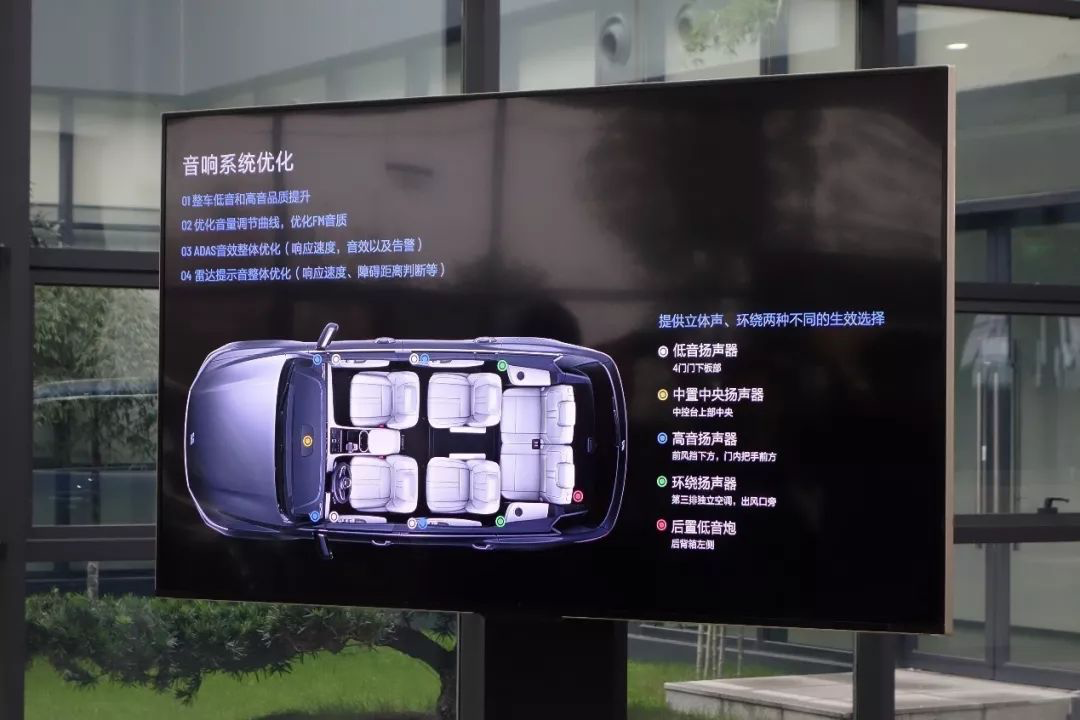
As for the optimization of the speaker, as a senior listener without desire, I definitely have no right to speak. Let’s just look at the pictures.
Optimization of Mobile APP Functions

Since no one has experience using an ideal mobile APP with vehicle control functions, every feature of the mobile APP is new to the car owner.
I took two screenshots of the mobile APP vehicle control interface. Currently, features such as range, door and window lock control, air conditioning, seat and steering wheel heating control, and vehicle location can all be viewed on the APP.
In addition, functions such as charging reservations and preset charging limits can also be set on the APP. After parking, you can also view four pictures taken by the panoramic camera on the mobile APP. You’ll no longer need to take a picture of the parking space number before going to park in an underground parking lot at the mall.
Comfortable Driving Mode Optimization
The Ideal ONE has two driving modes: Comfort and Sport. This time the focus is mainly on the Comfort mode. The new Comfort mode accelerates more smoothly, and the power is only released and unleashed in the middle to the rear of the throttle to further reduce energy consumption and prevent dizziness caused by acceleration.
As for the driving mode, I have a suggestion. The switching between the Comfort and Sport modes of the Ideal ONE is quite frequent. For example, when driving alone, Sport mode is used more frequently, while Comfort mode is used when traveling with family.
The current driving mode switch needs to be accessed on the central control screen, which is not very convenient in operation. It is hoped that in the future, quick switch buttons can be added to the control screen, even setting “Energy-saving,” “Comfort,” and “Sport” preset driving modes just like gasoline cars, linking power, suspension, steering, and kinetic energy recovery options, and adding a custom driving mode function.
Assisted Driving
In terms of assisted driving software upgrades, the Ideal ONE has undergone more than 30 iterations in two and a half months.
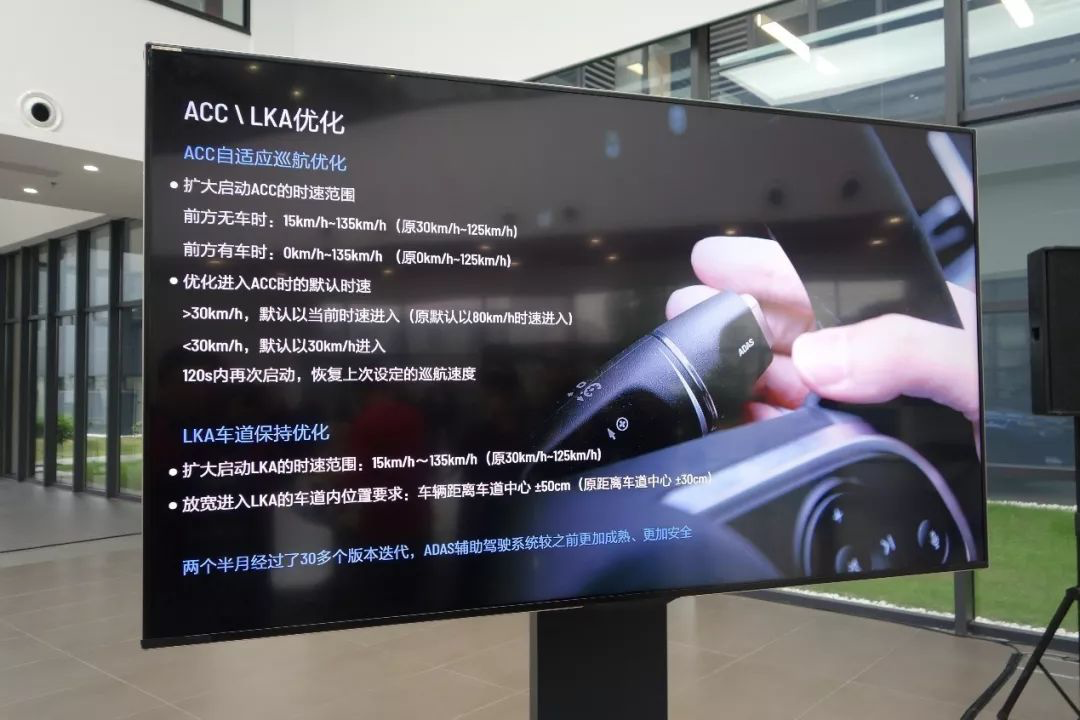
First of all, the speed range for ACC adaptive cruise control has been adjusted. In the absence of a front car, the minimum required speed for starting ACC has been lowered to 15 km/h, and the maximum speed limit has been raised to 135 km/h.
One thing to note here is that the maximum cruising speed for ACC is 130 km/h. That is to say, when ACC is activated at a speed of 135 km/h, the vehicle speed will be reduced to 130 km/h.
At the same time, the starting speed range for LKA lane keeping has also been correspondingly relaxed to 15 km/h-135 km/h.
In addition, many car owners gave feedback during the concentrated test drive that the vehicle speed would quickly increase to 80 km/h after entering ACC, which scared them. The new version has also made adjustments to this. When the speed is less than 30 km/h, entering ACC will default to raising the vehicle speed to 30 km/h; when the speed is higher than 30 km/h, entering ACC will default to maintaining the current speed.
The position requirement for entering the lane for LKA lane keeping has also been relaxed. Now the vehicle only needs to be within ±50 cm of the lane center to enable lane keeping, which is more friendly to drivers compared to the previous ±30cm.
Among the various upgrades to the assisted driving system, the most anticipated new feature is the addition of an assistant lane change switch.
With the switch turned on, the vehicle will still automatically complete the lane change action after the turn signal is turned on, as before. When the driver forcefully turns the steering wheel, the assisted driving will exit first, and will resume lane keeping after recognizing the lane again. This feature logic is especially suitable for those experienced drivers who are used to flicking the turn signal and making a lane change in a few flashes.
With the assistant lane change switch turned off, the lane keeping function will automatically exit after the turn signal is turned on, and will resume lane keeping after completing the lane change by turning off the turn signal.
New Electric Preservation Mode
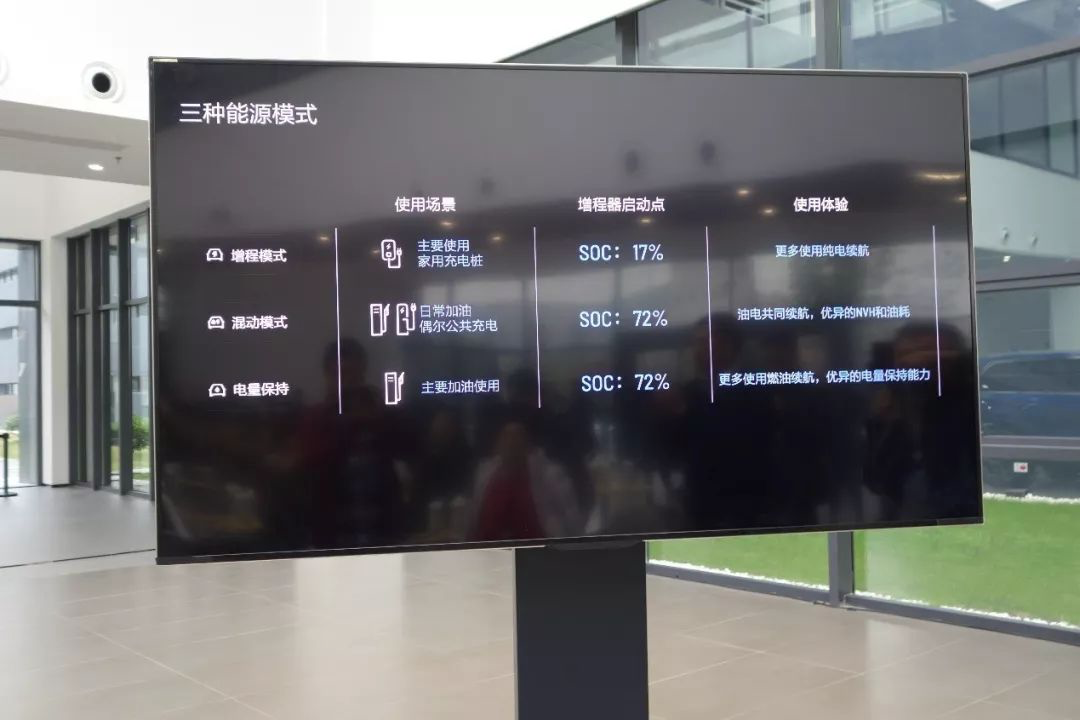
Besides the hybrid mode and range mode, the 2020 model has added an electric preservation mode. The new electric preservation mode has stronger ability to maintain electric power. In addition, the electric preservation mode is basically the same as the previous hybrid mode, which is suitable for users who never charge their vehicle.
Compared to the 2019 model, the new hybrid mode is exactly the same in power, but with a slight reduction in generator power, resulting in better NVH experience and lower fuel consumption.
In the test drive that day, the new hybrid mode had far better ability to maintain electric power than expected. The vehicle traveled between Changzhou and Wuxi and the display showed that the battery power was basically maintained at the level when it started.Regarding the fuel consumption in hybrid mode, the driving conditions on that day were less than 10 degrees Celsius, rainy, with the heat and heated seats turned on, and four people in the car. The route covered various road conditions such as city roads, provincial highways, highways, and mountain roads.

I took a photo of the fuel consumption display showing 8.3 L / 100 km on the way from Wuxi to Changzhou. Later, I asked other test drivers and found that some displayed less than 8 L, while others showed over 8 L, but all were roughly around 8 L / 100 km.
As for the extended range mode, there is no change compared to before, so we will not discuss it here. Also note that except for switching to the electric hold mode, which requires a minimum charge of over 60\%, the other two modes can be switched at any battery level.
The Quirky Concerns of Car Owners
Unlike the media that needs to constantly focus on various new cars, many ideal prospective car owners only pay attention to this one car. Therefore, they tend to be more meticulous and have some quirky details of concern. I have compiled some small issues from WeChat groups, the ideal APP, and my own observations for your reference.
1. Will the fully-wrapped wheels throw mud into the gap between the door and the car body?
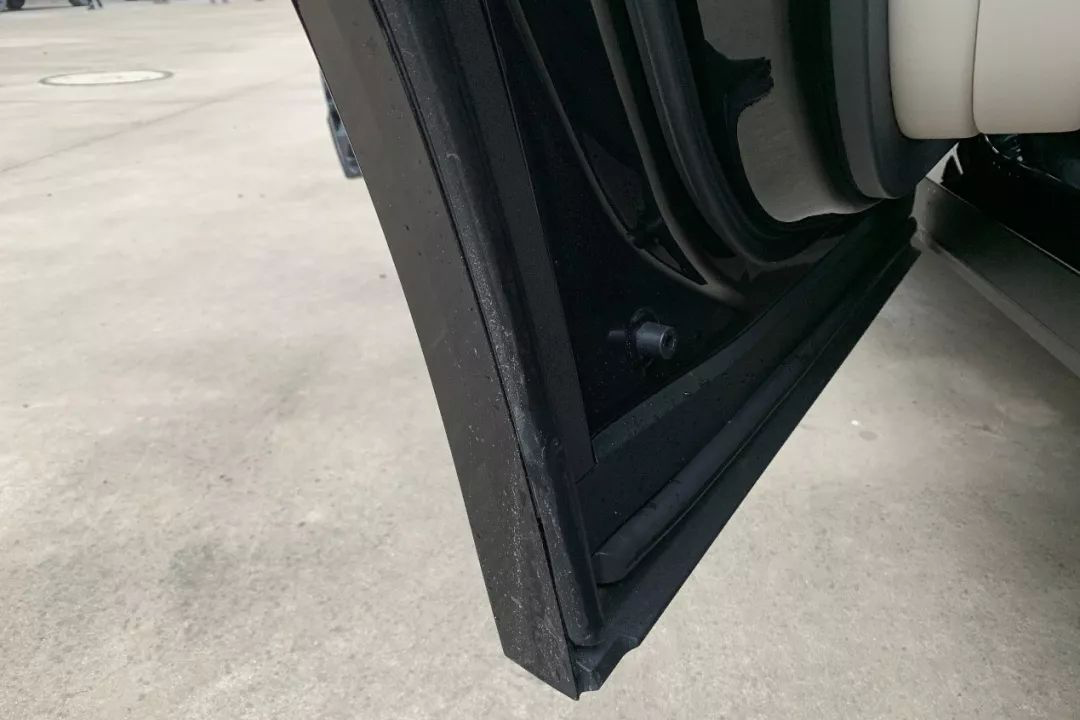
As shown in the picture, I took a photo of the bottom of the door, and it can be seen that, except for mud on the outer ring of the join between the door and the car body, there is basically no infiltration of mud into the inside.
2. Why does the child lock require a key turn to open or close, instead of using the lock with the built-in lever switch?
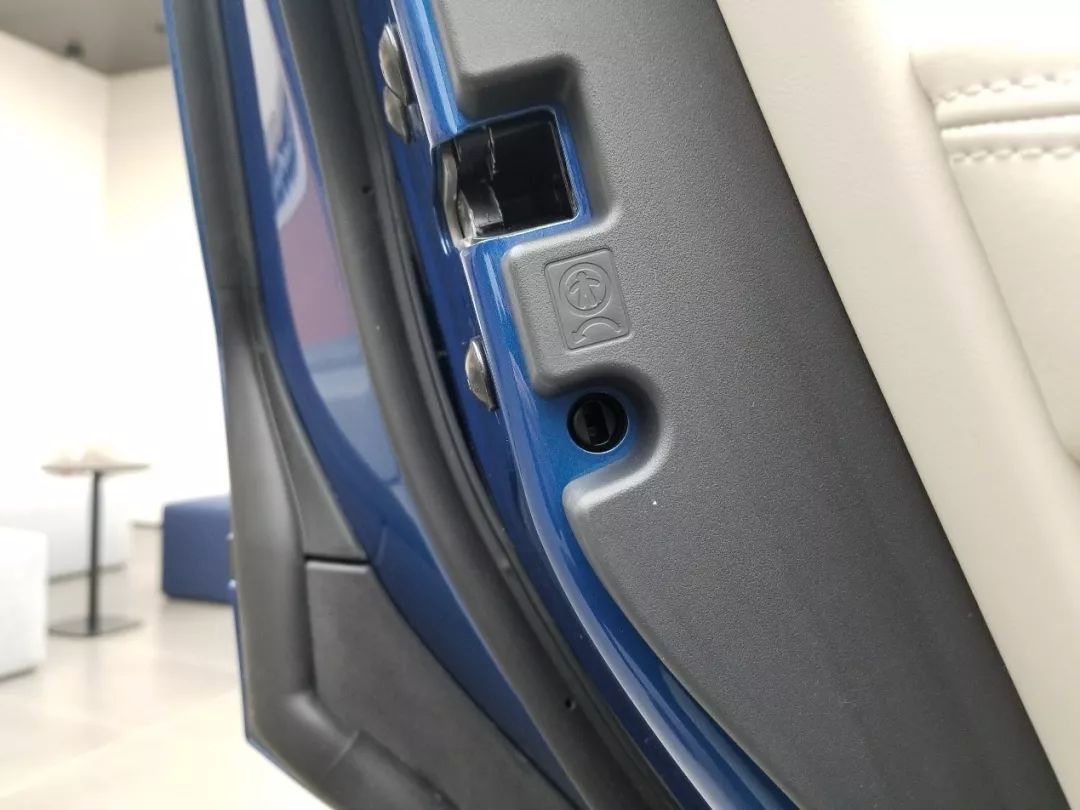
The lock structures of the two types of child locks are different. In automobile research and development, the development cycle of different components is not the same. Automobile door locks, because they involve safety and the structure of the door, are determined at the early stage of research and development and are difficult to change once decided.
3. Why are the circular buttons for seat adjustment not made of metal?
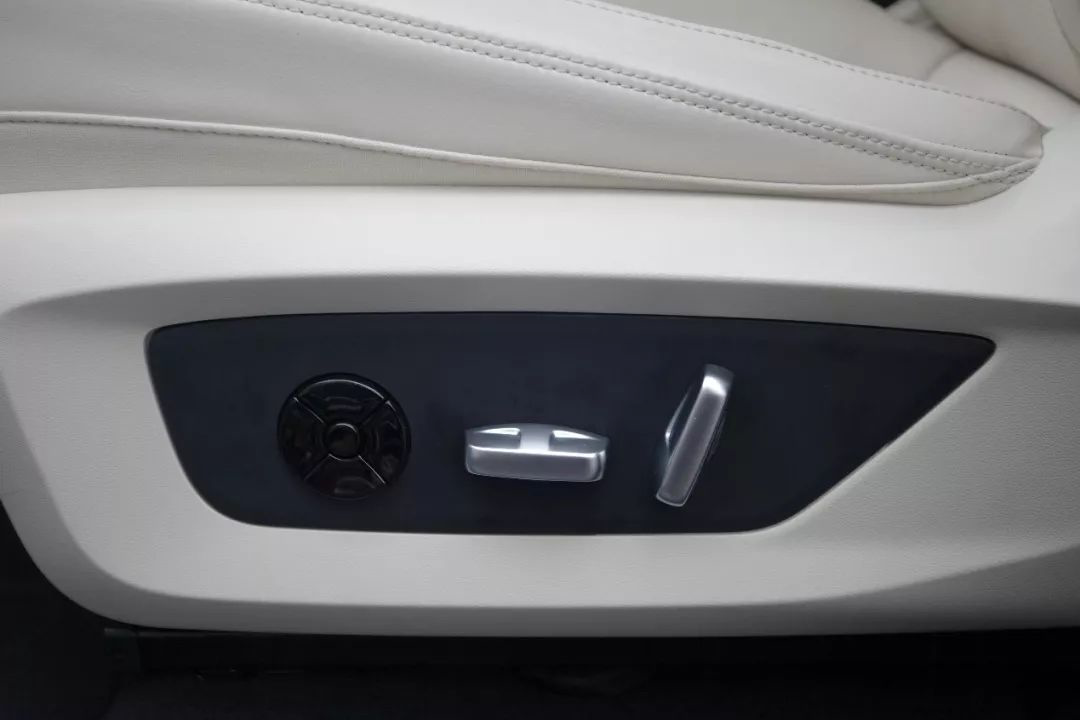 When the ideal designer was in the R&D stage, they attempted to use circular metal texture buttons, but found that they didn’t look good. Since the round buttons had a larger surface area, they didn’t match with the appearance of the seat adjustment buttons and didn’t look visually coordinated.
When the ideal designer was in the R&D stage, they attempted to use circular metal texture buttons, but found that they didn’t look good. Since the round buttons had a larger surface area, they didn’t match with the appearance of the seat adjustment buttons and didn’t look visually coordinated.
4. Why aren’t seat belts the same color as the seats?
It’s also because they don’t look visually coordinated. Except for a few brands such as Porsche and Bentley, there are very few cars on the market that can handle this combination.
5. Will there be any abnormal noise when changing the seat belt buckle position from a limit switch to a button?
No. Whether or not the buckle collides with the pillar trim panel during vehicle driving mainly depends on the spacing between the buckle and the trim panel. If the spacing is small, it is easy to collide and a tape-style buckle is needed. Because the Ideal ONE car is relatively large, the spacing between the seatbelt and the trim panel is also relatively large. After testing, there is no impact even if the buckle is changed to a button.
6. Can the car be locked with the key inside?
When the key is inside the car, it will not automatically lock when the person leaves. But you can manually lock the car using a physical key or by touching the car door or using the mobile app.
7. Why isn’t the bottom edge of the window trim a full metal cover?
The choice of the trim is related to the door design (the audience has learned something new). Since the relevant design of the door was determined in the early stage of R&D, the corresponding trim was used. It is a normal supplier selection and is not to save money or use inferior materials.
8. Why is the motor exposed and not covered with a guard plate?
The strength of the motor casing protection is sufficient, and there is no need to worry about the motor being damaged by stones. Moreover, installing a protective plate will affect the heat dissipation of the motor and will do more harm than good.
9. When will Android phones be able to use the Bluetooth key?
Currently, mainstream Android manufacturers are accelerating the adaptation of various models, and the goal for next year is to open the Bluetooth key function for the top 60 selling Android phones.
10. Is the sound of closing the rear door still loud?
No, the addition of sponge pads to the lock buckle cover plate on both sides of the rear door has reduced the impact sound when opening and closing the door, and now the sound of closing the rear door is much smaller.
11. When assisted driving is active and the vehicle automatically brakes, does the pedal follow?没有明显偏移,只是因为角度和拍摄距离的原因看起来有点不对齐。做工没有问题。No. The connection between the tail lights and tailgate is intentionally designed to be different in height, not due to poor workmanship.
18. Does the metal audio panel on the car door still hurt your hand?
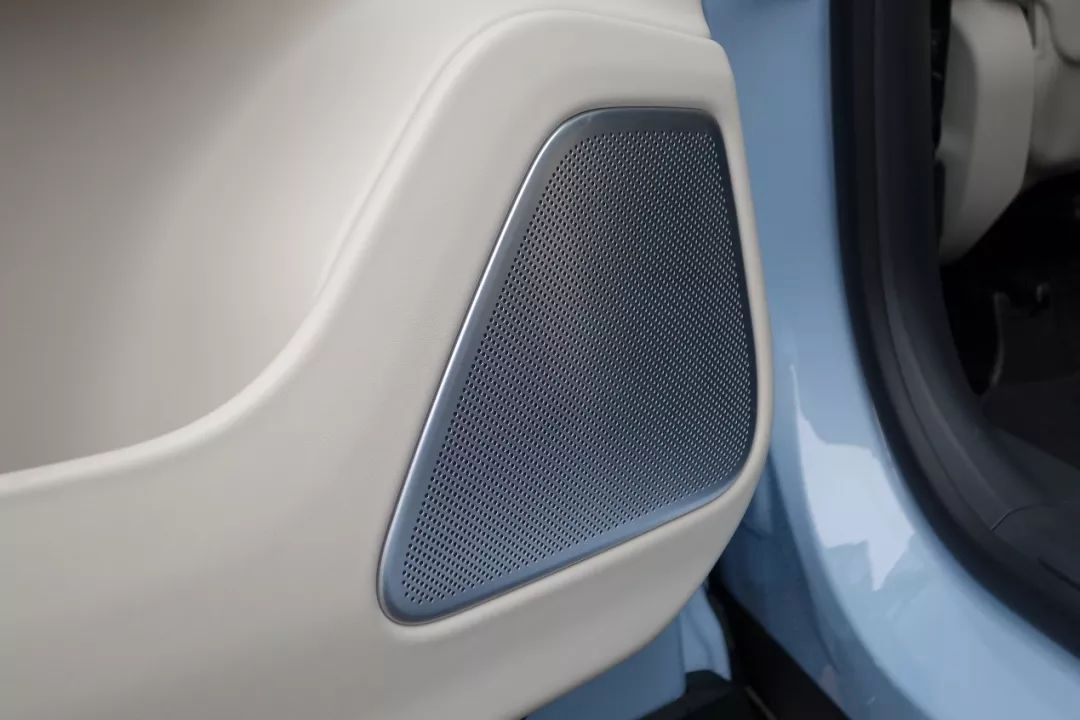
No, it doesn’t hurt anymore. The surface of the metal panel has been optimized, and now the feel is much better to the touch, without the feeling of having a piece of skin peeled off anymore.
19. When making a reservation to charge, will someone unplug the charging gun before it starts charging?
No, the charging gun cannot be unplugged while the car is locked.
20. How do you force start the range extender during a vehicle inspection?
Choose the exhaust gas detection mode on the central control screen.
21. Is there a Sentry Mode?
There is an upgraded plan with parking monitoring function, but it will be different from Tesla’s Sentry Mode.
A few more words
Yesterday, the delivery of the LI ONE officially began, and the 0001 owner, Han Han, has received the car. The closer it gets to my own delivery date, the calmer I feel. When passing by the parking lot filled with freshly manufactured LI ONEs at the Changzhou factory, I didn’t feel the excited feeling I had imagined. Instead, I just thought to myself, “Oh, my car should be in there too.” This calmness may be because I have been paying attention to the ONE for too long, or maybe because I already know enough about the LI ONE.
I first heard about LI through Li Xiang’s Weibo. In the early days, LI (then called “Chehejia”) was very low-key, with very few reports. Some sporadic news only said that besides SEV, there would be a large SUV that could meet the needs of family users for medium and long-distance travel in the future.
In the second half of 2017, in an interview with Li Xiang, I saw the product description of this mid-size SUV for the first time: 5 meters in length, comparable to luxury mid-size SUVs, with extended range, a range of 800 kilometers, standard advanced driving assistance system, lower fuel consumption than other cars in the same class, and an expected price of 300,000 to 350,000 yuan. My first thought after reading it was that it seemed quite valuable, so I started to pay more attention to this car’s dynamics.
From the product launch, Changzhou Base Open Day, Shanghai Auto Show, user concentrated test drive, and now this user experience ambassador event, I have witnessed the entire process of the LI ONE from product launch to mass production and delivery.Through contact with Li Xiang ONE and Li Xiang’s employees, I increasingly feel that this is truly a company composed of a group of people who are knowledgeable and passionate about cars, and who value and are willing to listen to various suggestions and opinions from users, sincerely building a car that satisfies them. In attitude towards products, Li Xiang impresses me with its respect for details and its courage to break through conventions. These two seemingly contradictory attitudes do not conflict with each other.
The respect for details refers to Li Xiang’s awe of car manufacturing. In the R&D phase, Li Xiang tested over 400 cars and covered over 7.7 million kilometers, more than twice that of traditional car companies.
According to Liu Jie, Vice President of Sales and Service at Li Xiang, “It’s not that traditional car companies do not have enough testing, but as a new brand, Li Xiang hopes to be more cautious.”
At the same time, the number of quality management personnel equipped by Li Xiang is three to five times that of traditional car companies, and even the quality inspection of parts is extended to secondary suppliers. I have seen many comments from suppliers on the news of Li Xiang, who express admiration for Li Xiang’s quality management mode.
In terms of product optimization, Li Xiang completely breaks through the convention. Before mass production, each iteration of Li Xiang ONE brings huge progress compared to the previous version. In addition to improving the conventional details, large configurations such as induction tailgate and variable air intakes were added in the later stage of R&D. From the perspective of traditional car manufacturing, the speed and content of these iterations are completely unimaginable.
As a user, like most people, I don’t understand and won’t delve into the complexity of the process, and I might even think that these optimizations are taken for granted. Perhaps only Li Xiang employees who have experienced it can understand the enormous effort behind it.
Of course, these are just some observations as an ordinary user. I cannot give an answer to how the final delivered car will perform, and whether it can meet the previously promised specifications. Just as I was about to finish writing this article, the delivery specialist notified me that the car will arrive at the delivery center next week and I can make an appointment to pick it up. So the answer of how the car will perform will be revealed soon.
This article is a translation by ChatGPT of a Chinese report from 42HOW. If you have any questions about it, please email bd@42how.com.
